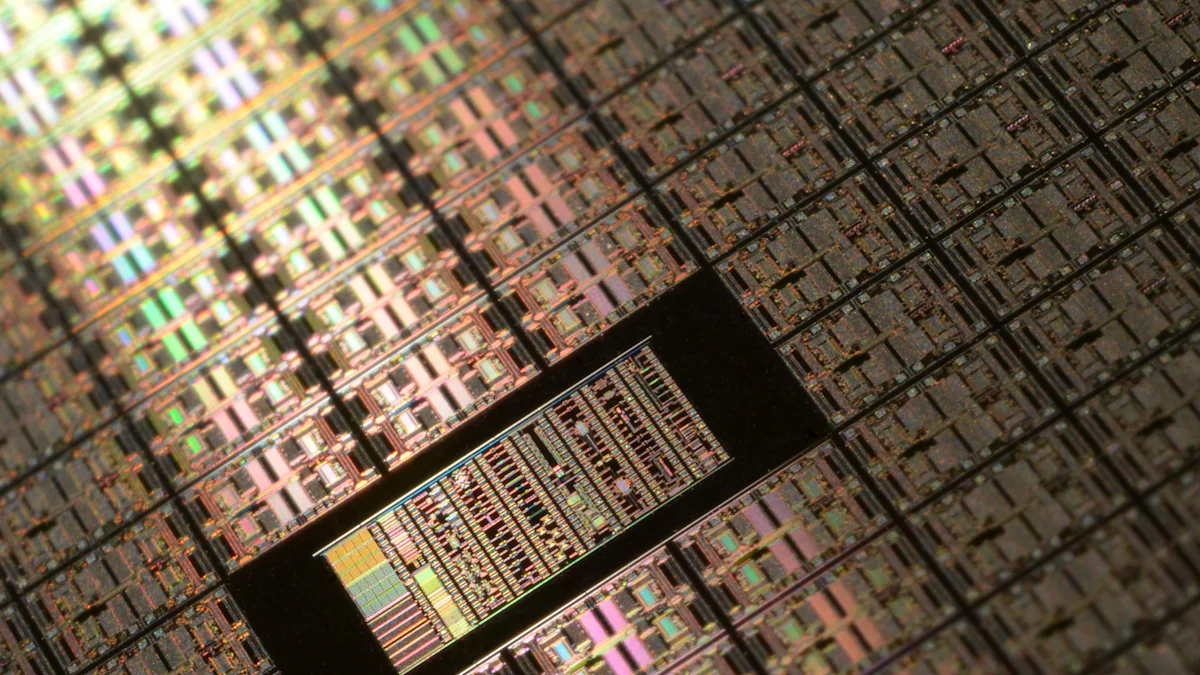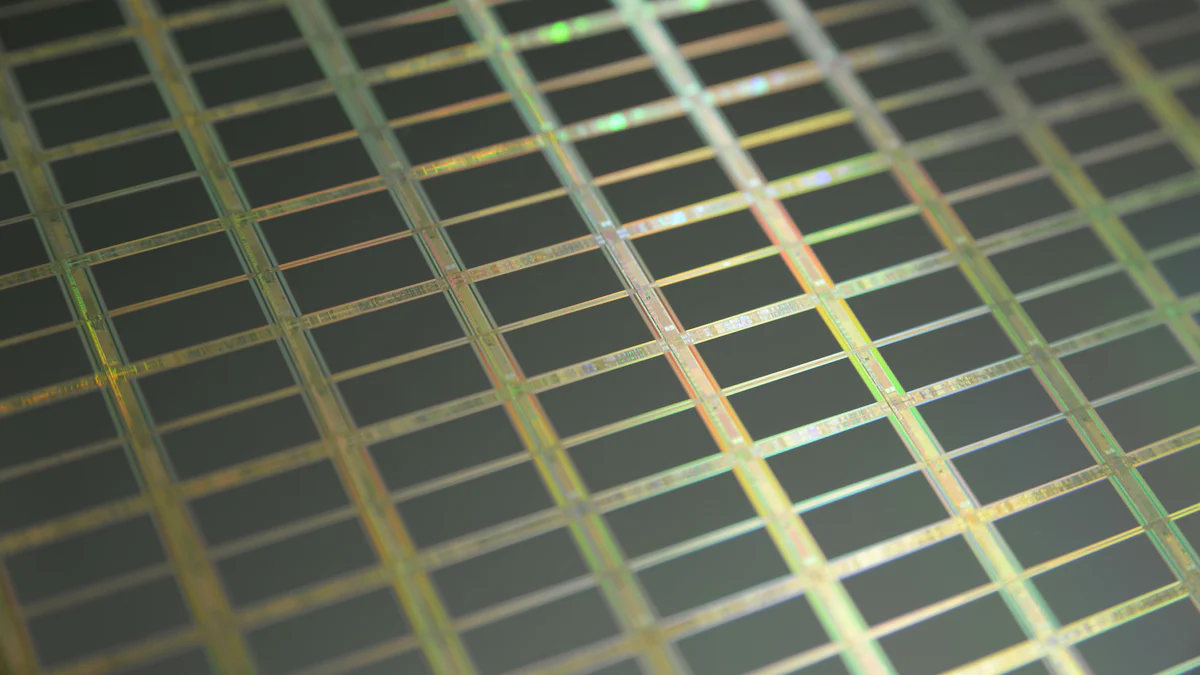2025年におけるSiCコーティング・サセプターの新たな市場動向

テクノロジーの境界線を押し続ける方法を疑問に思いますか? お問い合わせ SiC coated susceptorsお問い合わせ お問い合わせ silicon carbide coated susceptors 半導体製造におけるゲームチェンジャーです。 彼ら 極端な熱を処理し、過酷な化学物質に抵抗する高度なチップを作成するためにそれらを完璧なものにします。 彼らの能力 熱を均等に分配して下さい 欠陥を削減しながら、半導体の品質を向上させます。 確かに、 材料の高コスト そして、複雑な製造プロセスは課題ですが、その利点ははるかに上回っています。 と SiCコーティングそこで、問題の解決とイノベーションの推進は、これまで不可能な方法で行っています.
要点
- SiC coated susceptors チップ製造時に温度を安定させるのに役立ちます。 これにより、誤りが少なくなります.
- より少なく力を使用してエネルギーを節約し、生産をより安くそしてより緑にさせます.
- これらの受容体は厳しい条件でよく働き、長く持続します。 化学物質に抵抗し、汚染の可能性を低下させます.
- They 新しい技術をサポート 5GやIoTなど、未来のチップ作りに大切にしています.
- 緑の目標をサポートするために、環境に優しく、廃棄物や汚染を切断します.
SiCコーティングされたスセプターの高められた熱性能

半導体製造に関しては、熱管理がすべてです。 わずかな温度の矛盾がプロセス全体を捨てることができる方法を見ました。 SiCコーティングされた感受性器が輝きます。 それらはすべてを安定した、精密に保ちながら極端な熱を処理するために造られます.
熱経営改善
高度プロセスのための高温安定性
SiCコーティングされたスセプターについての最もクールなものの1つは、高温下でロック固体を維持する能力です。 ザ・オブ・ザ・ インフォメーション SiCのコーティングは高めます グラファイト基質の熱伝導性は、汗をかくことなく激しい熱を処理することができることを意味します。 この安定性は、一貫した高温が非交渉可能であるエピタキシのような高度なプロセスのためのゲームチェンジャーです.
精密製造のための均一熱配分
あなたは今までクッキーを焼くしようとし、いくつかの火傷や他の人が浸食しましたか? 均一な熱分布なしで半導体製造で起こることですね。 SiCコーティングされた感受性は表面を渡る熱を均等に広げることによってこの問題を解決します。 これにより、一貫した処理温度が確保され、精度が重視されます。 急速な、均一熱配分はまたより信頼できる全プロセスを作る薄膜の沈殿物の質を改善します.
半導体アプリケーションにおける効率向上
エネルギー消費量の削減
最近はエネルギー効率が大きく、SiCコーティングスセプターがお届けしています。 熱伝導性の向上により、高温を維持するために必要なエネルギーの量を削減します。 コストを削減するだけでなく、製造プロセスをより持続可能なものにする.
工程の信頼性および収穫の改善
SiCコーティングされたスセプターを使用して、 少数の欠陥およびより高い収穫. . 彼らは反応性ガスから保護し、感受性が時間をかけてそのまま保ちます。 この耐久性は、欠陥を最小限に抑え、信頼性を高める、エピタキシャル層の均一な成長を保証します。 エンドでは、無駄を少なくして、みんなのウィンウィンウィンです.
CVDおよびPECVDの適用のSiCの上塗を施してあるスセプターの拡大の採用

半導体製造における役割
極端な環境での耐薬品性
SiCコーティングされたスセプターが最も過酷な環境を処理する方法に常に驚いた。 これらのコーティングは盾のように機能します、, グラファイトコアの保護 腐食性の化学薬品および酸化から。 これは、化学蒸気蒸着(CVD)やプラズマ強化化学蒸気蒸着(PECVD)などのプロセスで特に重要です。極端な条件は規範です。 化学的損傷に抵抗することで、これらの受容体は汚染リスクを低減し、製造プロセスを清潔かつ効率的な状態に保ちます。 加えて、彼らは長く続く、それはより少ない取り替えおよびより少ないダウンタイムを意味します。 半導体業界で誰にとっても大きな勝利です.
薄膜蒸着プロセスにおける精密
薄膜蒸着に関しては、精密はすべてです。 SiCコーティングスセプターもここまでエクセルに。 彼ら 熱を吸収し、均等にそれを配して下さい ウェーハ表面全体で、一貫した温度を保証します。 この均一性は、欠陥が少ない高品質の半導体を作成するために重要です。 これはより良い基質品質と高い収量につながる方法を見てきました。 それは完全に調整された機器を持っているのが好きです。 強烈な熱の下で構造的な完全性を維持しているため、これらの感受性者はいつでも信頼できる性能を提供します.
新興技術の応用
5GおよびIoTデバイスの統合
5GとIoTの高騰により、先進半導体の需要が高まっています。 SiCコーティングされた感受性器はここに重要な役割を担います。 高温や耐腐食性を処理する能力は、これらの技術に必要な小さな、強力なチップの加工に最適です。 スマートホームデバイスや5G対応のスマートフォンであっても、これらのスセプターはそれを可能にします。 未来のコネクティビティを形づけているのは信じられないことです.
先進材料開発への貢献
SiCコーティングされたスセプターは、半導体だけでなく、先進材料のイノベーションを推進しています。 業種 様 電気自動車、再生可能エネルギーおよび無線通信は高性能材料に頼ります。 これらの感受性はMOCVDのようなプロセスの効率を高めます、欠陥を減らし、基質の質を改善します。 これは、最先端のアプリケーションのためのより良い材料を意味します。 何ができるかの境界を押しているかを見るのはエキサイティングです.
SiCは高度の包装のスセプターに塗りました
ミニチュア化と統合
より小さく、より効率的なチップの有効化
テクノロジーがより小さく、より強力になれるか、常に気づいたんです。 SiCコーティングされたスセプターはこの巨大な役割を果たしています。 とりあえず 高められた熱性能 半導体プロセス中に精密な温度制御を保証します。 この精度は、品質を損なうことなく、より小さなチップを作成するために不可欠です。 さらに、化学抵抗と機械的強度は、より良いエピタキシャル層を意味します。 これらのレイヤーは、小型化デバイスの基盤です。 これらの受容体が手のひらに収まる小さなチップにより多くの電力をパックすることができるのは驚くべきことです.
支持する異質統合技術
Heterogeneousの統合は技術の世界で大きいbuzzwordであり、よい理由のために。 異なるコンポーネントを1つのパッケージに組み合わせることはすべてです。 SiCコーティングされたスセプターは、製造中に構造的な整合性を維持することによって、これを可能にします。 極端な条件下での耐久性は、複数の技術を統合するのに不可欠である材料の均一な成長を保証します。 先進的なセンサーや高性能プロセッサーのどちらでも、次世代のデバイスを想定したスセプターが舗装されています.
高性能材料の要求
次世代デバイスの耐久性向上
耐久性は高度の包装で使用される材料のために必要です。 SiCコーティングされたスセプターはここを加速します。 ザ・オブ・ザ・ 炭化ケイ素の層は堅い障壁として機能します 摩耗、腐食および熱圧力に対して。 この保護は取り替えのための必要性を減らすsusceptorの寿命を拡張します。 メカニカルの安定性が、割れない熱循環を繰り返すことができる方法を見てきました。 この弾性は、極端な温度下での動作に不可欠です。, 長年の信頼性の高い性能を保証します。.
革新的な包装技術との互換性
高温および反応環境を扱うことができる革新的な包装の技術の要求材料。 SiCコーティングされた感受性器はすべての箱を点検します。 それらの熱安定性と耐薬品性は、精度がキーであるMOCVDなどのプロセスに理想的です。 また、デバイスの信頼性を向上させる汚染のリスクを低減します。 性能を高めるだけでなく、メンテナンスコストを長持ちさせることで、これらの受容体が信じられないほどだと思います。 彼らは本当に高度なパッケージングアプリケーションのための費用対効果の高いソリューションです.
SiCコーティングスセプターのサステナビリティと環境への影響
環境に優しい製造業の練習
廃棄物・排出量の削減
持続可能性はよりスマートな選択肢から始まります。SiCコーティングされたスセプターは完璧な例です。 とりあえず 延長寿命はより少ない取り替えを意味します廃棄物を大幅に削減する。 加えて、熱効率は高温プロセスの間にエネルギー消費を下げます。 排出量を削減するだけでなく、より多くの資源効率を生産する。 これらの利点は、緑の産業慣行のための成長するプッシュと整列する方法を見てきました.
彼らが目立たせるものは次のとおりです
- 耐久性は、頻繁な交換から廃棄物を最小限に抑えます.
- 改善された熱効率は環境の足跡を下げるエネルギー使用を減らします.
- They mOCVDプロセスの強化、少数の欠陥およびよりよい基質の質に導く.
これらの受容体を使用することで、メーカーはより少ない廃棄物を発生させながらより高い収量を達成することができます。 業界と惑星の両方の勝利です.
再生可能で持続可能な材料の使用
私はSiCコーティングされた感受性者を愛しているもう一つのことは、持続可能性の可能性です。 多くのメーカーは、再生可能な材料を生産に使用する方法を探しています。 このシフトは、環境への影響を削減するだけでなく、循環経済をサポートしています。 こうした取り組みが、半導体製造の持続可能な未来を形づけるのか、ワクワクワクしています.
環境規格の遵守
グローバル規制への適用
環境基準を満たすことはもはやオプションではありません。それは不可欠です。 SiCコーティングされた感受性器は製造業者が厳密な全体的な規則と迎合的とどまるのを助けます。 廃棄物や排出量を削減する能力は、これらの要件と完全に整列します。 これにより、パフォーマンスを損なうことなく、持続可能性の目標を達成する企業にとって魅力的な選択肢が得られることに気づきました.
半導体業界におけるグリーンイニシアチブへの対応
半導体業界は緑色のイニシアチブを取り入れており、SiCコーティングスセプターは重要な役割を果たしています。 エピタキシャル成長のようなプロセスの精密な制御を可能にすることで、エネルギー効率の高い技術をサポートします。 これはより良いデバイス性能と低エネルギーの使用につながる. また、次世代のパワーデバイスにとって重要なワイドバンドギャップ半導体の進歩を推進しています.
彼らが貢献する方法は次のとおりです
- They 製造効率の向上 高められた熱安定性および化学抵抗によって.
- 高品質のSiC層の高機能化により、高度な用途に使用できます.
- エネルギー効率の高い技術の転換を支える.
これらの受容体が、より持続可能な未来に向けて産業が動くのを助ける方法を見ることは驚くべきことです.
SiCコーティング技術の進歩
精密コーティングのイノベーション
均一および欠陥なしのコーティングの開発
SiCコーティング技術がどこまで来るかに常に感銘を受けました。 今日は、ほぼ完璧になれるコーティングを実現しています。 プロセスのような 化学気相成長法(CVD) 温度、圧力、ガスの流れを調節し、薄く、欠陥のない層を作成します。 これらのコーティングは信じられないほど純粋で緻密で、機械的強度と耐久性を高めます。 半導体製造などのハイテクな用途で、この精度がいかに完璧になれるかを見てきました.
レーザーCVD 別の刺激的な進歩です。 SiCの層を迅速かつ均一に堆積させるために高エネルギー密度を使用します。 この方法は、欠陥を削減するだけでなく、生産をスピードアップします。 これらのイノベーションは、業界の品質と効率性のために新しい基準を設定しているのは驚くべきことです.
高度な蒸着技術の導入
高度な蒸着技術がゲームを変えています。 プラズマ強化CVDは、品質を犠牲にすることなく、より速い堆積率を可能にします。 ハイブリッド方式は、伝統と近代的なアプローチを組み合わせ、優れた結果をもたらします。 これらの技術は、コーティング性能と信頼性、特に要求の厳しい環境を改善する方法に気付きました.
レーザCVDは、ここにも際立っています。 蒸着プロセスの精密な制御は一貫した結果を常に保障します。 半導体や航空宇宙用途で波を発生させる技術です。 これらの進歩がSiCコーティングのより多くのブレークスルーのための方法を残すことは明らかです.
コスト効果とスケーラビリティ
生産コストの削減
SiCコーティングされたスセプターは、最初は高価に見えるかもしれませんが、その長期的な利点は否定できません。 耐久性は、メンテナンスコストを削減するより少ない交換を意味します。 改善された熱効率はまたエネルギー消費を下げます、長期操業で節約します。 これらの要因がメーカーにとって費用対効果の高い選択肢になる方法を見てきました.
より良い生産プロセスは、別の大きな勝利です。 製造費用を削減し、遅延や装置の故障のリスクを最小限に抑えます。 これらの改善は、業界によりアクセスしやすい高品質のSiCコーティングを作ることは信じられないほどです.
量産のスケーラビリティ
生産をスケーリングすることは、常に課題ですが、SiCコーティングされたスセプターは、タスクまで行うことが証明されています。 それらの延長寿命および熱安定性は大量生産のためにそれらを理想的にします。 過酷な条件でも、耐薬品性が一貫した性能を発揮するのに気付きました.
高性能機器の需要が高まっています。 製造者は点検の費用を保っている間この要求に応じる高度の技術を採用します。 大規模なアプリケーション向けに、SiCコーティングスケーラブルな技術がいかにスケーラブルなかがわかるのはエキサイティングです.
SiCコーティングされたスセプターが半導体業界を変革していることを振り返ります。 詳しくはこちら 蒸着技術の進歩 持続可能性への役割は、かつてないような革新を推進しています。 自分の姿を見る 比類のない耐久性と熱効率 プロセスを最適化し、欠陥を減らし、収穫を改善します。 今日の要求に応えるだけではなく、未来を形作ります。 寿命と環境にやさしい利点で、より効率的な産業を緑化するための方法を舗装しています。 これらのブレークスルーがどのように進化し、明日の課題に取り組むかを待つことはできません.
よくあるご質問
SiCコーティングされた感受性器は何のために使用されるか?
SiC coated susceptors 半導体製造に不可欠です。 それらはCVDおよびPECVDのようなプロセスのためにそれらを完全にする極度な熱および抵抗の化学薬品を扱います。 5GやIoTなどの先進技術が重要であるチップ品質を向上し、不具合を削減することができました.
SiCコーティングされた感受性器が持続可能性を改善する方法は?
耐久性は頻繁に取り替えからの無駄を減らします。 また、エネルギー使用量を下げる 熱効率の改善. . リサイクル可能な材料をサポートし、製造中の排出量を削減することで、グリーンイニシアチブとどのように整合するかが大好きです。 業界と惑星の両方の勝利です。 ふりがな
SiCコーティングされた感受性器は費用効果が大きいですか?
絶対に! 彼らの寿命とエネルギー効率は、コストを節約する一方で、彼らは高価な上面に見えます。 メンテナンスコストを削減し、歩留まりを改善し、メーカーにとってスマートな投資をすることに気づきました.
SiCコーティングされた感受性器は極端な環境を扱うことができますか?
はい、彼らはそれのために構築されています! 耐食性は腐食性ガスから保護し、熱安定性は高温下で信頼できる性能を保障します。 完全性を失うことなく、最も過酷な条件で繁栄していると見てきました.
高度なパッケージングに重要なSiCコーティングスセプターはなぜですか?
精密な温度制御を確保することで、より小型で効率的なチップ化を実現します。 耐久性は、ヘテロ遺伝子の統合のような革新的なパッケージング技術をサポートしています。 未来の小型化装置の未来を形づけているのは素晴らしいと思います.